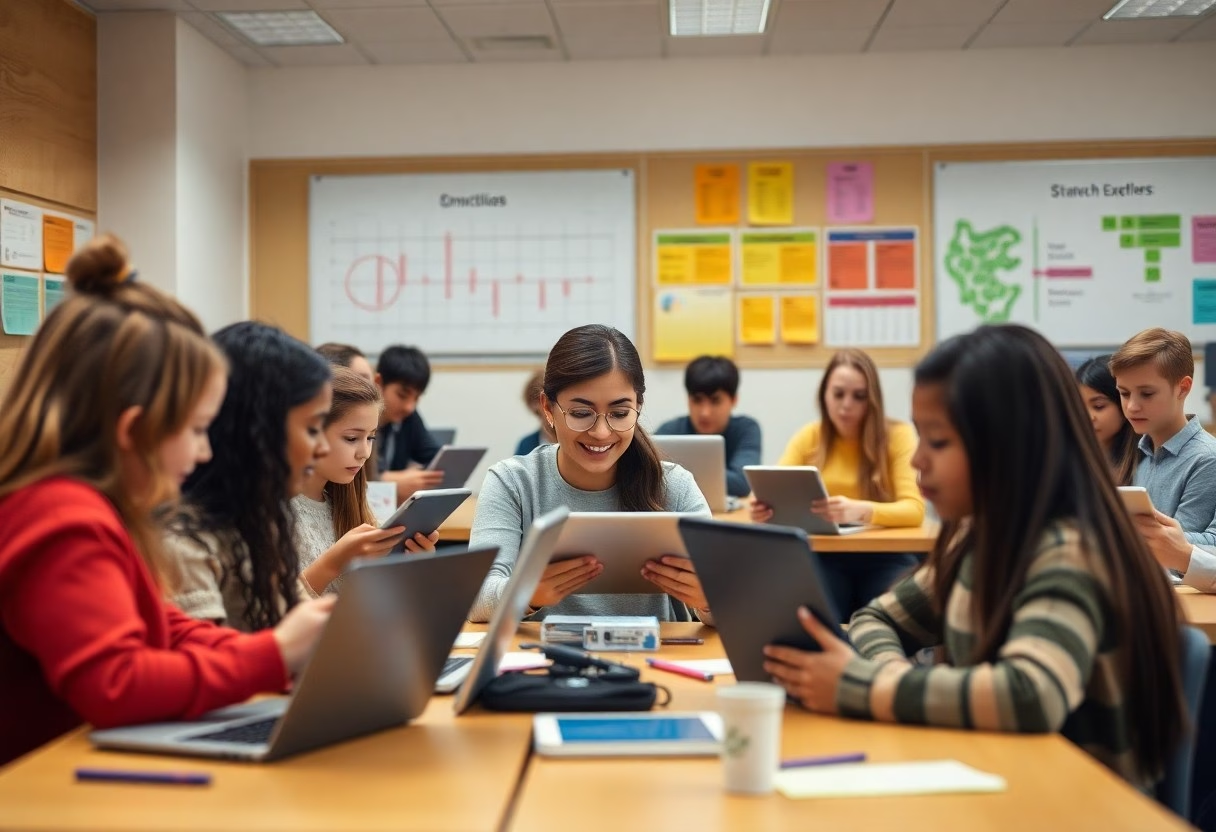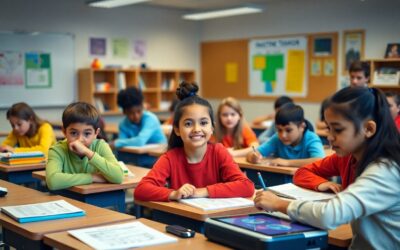Just like every student has unique strengths and challenges, tailored learning plans can provide the personalized support you need to thrive. These customized approaches allow educators to address your individual learning styles, preferences, and pace, ensuring a more effective educational experience. By identifying your specific goals and obstacles, tailored learning plans help you maximize your potential and build confidence in your abilities. In this post, we will explore the transformative impact of personalized education and how it can cater specifically to your needs.
Understanding Tailored Learning Plans
To effectively meet diverse educational needs, tailored learning plans are designed to adapt to the unique requirements of each student. These personalized approaches take into account various factors such as learning styles, interests, and pace, ensuring that educators can provide the appropriate support for optimal growth.
Definition and Importance
Against a backdrop of one-size-fits-all education, tailored learning plans emerge as a vital strategy to promote personalized learning experiences. By addressing individual strengths and challenges, these plans help foster engagement and motivation, ultimately leading to better academic outcomes and a deeper understanding of the material.
Key Components of a Tailored Learning Plan
Any effective tailored learning plan consists of several important components, including clear learning objectives, assessments for tracking progress, and resources that align with your learning style. Additionally, regular adjustments based on ongoing evaluations ensure that the plan remains relevant and effective over time.
Even within those components, strong communication between educators, students, and parents is paramount. This collaboration allows for a more nuanced understanding of student needs and preferences, enabling the continuous refinement of learning strategies. Furthermore, the integration of technology can enhance engagement and provide additional resources that cater specifically to your learning objectives and preferences.
Assessing Individual Student Needs
Now, understanding the unique requirements of each student is vital for creating effective tailored learning plans. By assessing individual student needs, you can identify their strengths, weaknesses, and specific areas where they require additional support. This deeper insight enables your educational strategies to be customized, ensuring that each student can engage with the learning material more effectively.
Methods of Assessment
Around various educational settings, different methods of assessment can be employed. This includes standardized tests, informal observations, and student self-assessments. By utilizing a combination of these approaches, you can gain a well-rounded understanding of a student’s capabilities and areas for improvement.
Analyzing Learning Styles and Preferences
Before developing tailored learning plans, it is important to identify and analyze your student’s learning styles and preferences. This will help you to adapt the educational content to fit their unique way of absorbing information effectively.
And by focusing on different learning styles—such as visual, auditory, and kinesthetic—you can design activities and assessments that resonate with your students. Engaging with your students to gather insights about their preferences allows you to foster a more motivating and productive learning environment. Tailoring educational experiences to their unique styles helps in maximizing their potential and creating a more enjoyable learning journey.
Implementing Tailored Learning Strategies
One of the key aspects of effective tailored learning plans is the implementation of targeted strategies that align with each student’s unique needs. This involves closely monitoring student progress and adjusting methods accordingly to ensure that the learning experiences are not only engaging but also effective. By embracing these strategies, you can foster an environment where every student feels supported in their educational journey.
Customizing Curriculum and Resources
By integrating various materials and learning paths, you can customize the curriculum to match the diverse interests and abilities of your students. This flexible approach allows you to select resources that resonate with each learner, facilitating deeper engagement and comprehension. Tailoring resources can involve hands-on activities, digital tools, or even specialized texts that cater to different learning modalities.
Differentiated Instruction Techniques
Before implementing any instructional techniques, it is necessary to assess your students’ individual strengths and weaknesses. This assessment leads to the development of differentiated instruction methods, which allow you to provide varied activities and assessments that match your students’ learning preferences. By varying your teaching approaches, you can effectively support students at different levels, ensuring that each learner has the opportunity to succeed.
Further, differentiated instruction techniques empower you to create a dynamic classroom environment. You can incorporate small group discussions, targeted assignments, and flexible pacing to cater to various learning styles. For instance, visual learners might benefit from graphic organizers, while auditory learners may thrive through discussion-based activities. By employing these strategies, you not only enhance engagement but also promote a deeper understanding of the material, ultimately leading to improved student outcomes.

Monitoring Progress and Adjusting Plans
All educational journeys benefit from continuous assessment and feedback, ensuring that tailored learning plans remain effective. Regularly monitoring each student’s progress allows you to identify areas of improvement and adapt strategies accordingly. By utilizing various assessment methods, you can create a dynamic learning environment that is responsive to individual growth and needs.
Continuous Assessment Techniques
One effective method for monitoring progress is the implementation of continuous assessment techniques. These can include quizzes, reflective journals, or digital portfolios that track your learning outcomes over time. By integrating these techniques into your learning plan, you not only gauge understanding but also foster a greater sense of ownership in your educational journey.
Feedback Mechanisms for Students and Educators
After assessments, establishing robust feedback mechanisms is necessary for both students and educators. By creating open lines of communication, you can enhance your learning experience and ensure that instructional strategies effectively meet your needs.
In addition to formal assessments, feedback can be gathered through one-on-one discussions, peer reviews, and anonymous surveys. These mechanisms provide valuable insights that empower you to understand your strengths and areas for growth. Additionally, educators can fine-tune their teaching methods based on this feedback, creating a more tailored approach to learning that adapts over time. Engaging in this collaborative feedback process enables a supportive learning atmosphere where you feel valued and invested in your own education.
Overcoming Challenges in Tailored Learning
Despite the significant advantages of tailored learning plans, challenges may arise in their implementation. These can include resistance from stakeholders who may be accustomed to traditional methods, technology issues, and varying levels of student engagement. A proactive approach is imperative in navigating these challenges, allowing for more effective integration of tailored learning methodologies into your educational environment.
Addressing Resource Limitations
Between budget constraints and the availability of technology, addressing resource limitations is vital for implementing effective tailored learning plans. You may need to explore alternative funding sources, grant opportunities, or partnerships with educational organizations to bridge these gaps. Creative problem-solving and community collaboration can help ensure that you have access to the resources needed for effective student engagement.
Ensuring Teacher Training and Support
Supportive training and professional development for educators can enhance the effectiveness of tailored learning plans. You will benefit from providing teachers access to workshops, resources, and ongoing guidance to help them navigate personalized instruction. This not only boosts confidence but also encourages innovation in the classroom.
Teacher preparation is imperative in successfully integrating tailored learning. When you invest in comprehensive training, it equips your educators with the tools and techniques they need to assess individual student needs effectively. Additionally, ongoing support creates an environment where teachers feel empowered and motivated. Investing in their professional development ensures that they can adapt lessons dynamically and utilize assessment data to refine instructional strategies, ultimately leading to improved student outcomes.
Case Studies: Successful Tailored Learning Initiatives
For those looking for inspiration, several case studies highlight the effectiveness of tailored learning plans. These initiatives show significant improvements in student outcomes:
- Case Study 1: District X improved student math scores by 30% after implementing personalized learning plans.
- Case Study 2: School Y reported a 25% increase in literacy rates for K-3 students through personalized reading programs.
- Case Study 3: Program Z decreased drop-out rates by 40% by offering tailored engagement activities for at-risk students.
- Case Study 4: Company A enhanced employee training effectiveness by 35% using adaptive learning technologies.
Real-World Applications and Outcomes
Successful tailored learning initiatives demonstrate the potential for significant improvements in educational outcomes. By focusing on each individual’s strengths and weaknesses, these programs enhance engagement and achievement.
Lessons Learned from Implementation
About the lessons learned during these implementations, the importance of constant assessment is evident. Continuous feedback allows you to adjust learning plans to meet evolving needs effectively.
From these case studies, you can discern that collaboration among educators, technology integration, and ongoing evaluations foster a more personalized learning environment. Identifying effective resources and sharing best practices can further drive the success of tailored learning initiatives in your own context.
Final Words
On the whole, tailored learning plans empower you to effectively address individual student needs by providing personalized strategies that align with each student’s unique strengths and challenges. By assessing their learning styles, preferences, and progress, you can develop targeted interventions that inspire engagement and foster academic growth. This customized approach not only enhances understanding but also builds confidence, enabling you to support every student in reaching their full potential. Implementing tailored learning plans encourages a positive learning environment where every individual can thrive.
FAQ
Q: What are tailored learning plans and how do they function?
A: Tailored learning plans are customized educational strategies that cater to the unique needs, preferences, and learning styles of individual students. They function by assessing each student’s strengths and areas requiring improvement, allowing educators to specify learning goals, resources, and instructional methods. This personalized approach helps ensure that learning experiences are relevant and engaging for each student, promoting better understanding and retention of knowledge.
Q: How do tailored learning plans enhance student engagement and motivation?
A: Tailored learning plans enhance student engagement and motivation by allowing students to take an active role in their education. When learning experiences are customized to align with their interests and ambitions, students feel more connected to the material. This sense of ownership fosters motivation to participate in their learning process, as they can progress at their own pace and receive immediate feedback based on their specific needs. Engaged students are more likely to demonstrate persistence and commitment to their academic goals.
Q: In what ways do tailored learning plans address diverse learning challenges among students?
A: Tailored learning plans effectively address diverse learning challenges by incorporating various instructional strategies that accommodate different learning styles and abilities. For instance, some students may benefit from visual aids, while others might excel with hands-on activities or auditory instructions. By analyzing each student’s learning profile, educators can implement modifications such as differentiated instruction, scaffolded learning, and personalized feedback. This adaptability ensures that all students receive the support they need to overcome obstacles and succeed in their educational pursuits.




0 Comments